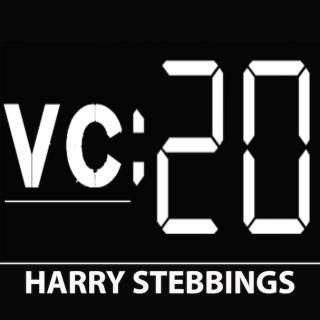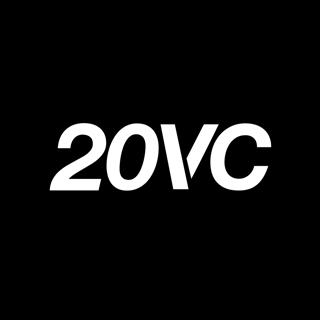
Founders Friday 002: Balderton's James Wise interviews 20VC Founder, Harry Stebbings
Today is a very special show as James Wise, Principal at Balderton Capital turns the tables on Host of The Twenty Minute VC, Harry Stebbings. In today's brilliant interview by James we delve into what has led to Harry's interest in the VC industry, why did Harry start The 20 Minute VC, how does Harry identify guests to interview, how does he approach those guests, how has Harry found his first experience in the venture industry, what has surpassed Harry about the VC industry, what traits has Harry spotted that are common among the great VCs interviewed, is Harry optimistic or not about the venture industry, what would Harry recommend for other people looking to go into venture. Items Mentioned in Todays Show: Harry's Favourite Books: Tim Ferris: 4 Hour Work Week, 4 Hour Body Shyp Crowdcube, 3DHubs, Tictail MMC Ventures, Founders Forum As always you can follow Harry, James and The Twenty Minute VC on Twitter here!
3 Jul 201521min

20 VC 050: Starting, Building and Selling in SaaS with the King of SaaS, Jason Lemkin, Managing Director @ Storm Ventures
Jason Lemkin is Managing Director at Storm Ventures focussing on early stage SaaS and enterprise startups. Jason is an acknowledged thought leader in SaaS through his creation of the SaaStr community, connecting thousands of SaaS entrepreneurs and generating upwards of 1,000,000 views a month around core SaaS topics, with a particular focus on accelerating revenue and early-stage SaaS sales and marketing. Prior to Storm, Jason served as CEO and co-founder of Storm Ventures-backed EchoSign, the web’s most popular electronic signature service. Jason led EchoSign from inception through its acquisition by Adobe Systems Inc. in 2011. He then served as Vice President, Web Services at Adobe, where he oversaw the growth of EchoSign and Adobe Document Services to $100,000,000+ ARR in 2013. In Today's Episode You Will Learn: How Jason made his way into the SaaS and VC industry? What actions did Jason do to get his blog to 1m+ page views per month? What advice would Jason give to founders thinking of selling to large companies? What type of entrepreneur does Jason like to invest in? How does Jason see SaaS valuations, with recent enormous rounds from Zenefits? What areas of the SaaS industries are neglected or undervalued? Is the 40% growth rule broadly correct and can this be applied to early stage tech companies? What is Jason's pre-investment meeting approach like? What makes a founder insane in a good way, rather than a bad way? How are SaaS companies innovating to acquire new customers? Quick Fire Round: Apple: Hit or Miss Most exciting SaaS companies and sectors Jason's favourite book and why? Items Mentioned in Today's Episode: SaaStr: Jason's Blog Jason's Favourite Book: The Lion Who Shot Back Mark Suster: Both Sides Follow: @saleshacker (amazing content from VPs of Sales @ Top Tech Startups) Emergence Capital: Joe Floyd David Saks: Yammer Slack: Stewart Butterfield, Zenefits: Parker Conrad
1 Jul 201523min

20 VC 049: VC is Getting Younger with Spencer Lazar @ General Catalyst Partners
Spencer Lazar is a Principal at General Catalyst Partners, based in New York City. He focuses on early stage software & internet investments, with a particular interest in online marketplaces, mobile applications, web services, and enterprise IT. Spencer was previously the cofounder of Spontaneously, Inc - an iOS development studio. Prior to that he was an early stage software & internet investor at Accel in London, where he sourced and worked with companies including Hailo, Birchbox, Bonobos, ForgeRock, and Qriously. In Today's Episode You Will Learn: How is the roads into the venture industry changing? What young people can do to make themselves more attractive to VCs? What would make Spencer's perfect founder? How important is geography when investing in startups? How does Spencer feel the education technology space is developing? What metrics Spencer examines when investing in a startup? What sectors is Spencer most interested in? Items Mentioned in Today's Show: Spencer's Favourite Book: The Everything Store on Jeff Bezos Spencer's Latest Investment: CampusJob Insight Venture Partners How Lightspeed's Jeremy Liew invested in Snapchat? Hot EdTech Startups: Lynda.com, PluralSight, General Assembly, Grovo, ClimbCredit Oscar, Sensio As always you can follow Harry, Spencer and The Twenty Minute VC on Twitter here!
29 Jun 201526min

Founder's Friday 001: How to Create Great Company Culture with Anand Sanwal, Founder @ CB Insights
Anand Sanwal is the CEO and Co-Founder of CB Insights. Specifically, CB Insights tracks financing trends and private companies in the healthcare, industrial, technology, software, energy & utilities, renewable, internet and mobile industries. CB Insights works primarily with venture capital, private equity, angel investors, corporate development, corporate strategy and family offices. Formerly, Sanwal was the Vice President at American Express. Sanwal was responsible for managing three primary functions which included the (1) Chairman’s $50 Million Innovation Fund, (2) CFO’s strategic planning function and (3) Enterprise Investment Optimization group. He is the author of “Optimizing Corporate Portfolio Management” which features a forward by former American Express and Citigroup CFO, Gary Crittenden. In Todays Episode You Will Learn: Why Anand chose not to take VC funding for CB Insights? Should all subscription based companies be revenue funded? What one key determinant has contributed to the success of CB Insights? How has Anand's hiring strategy changed over time? How strategies does Anand use to create this company culture? What is the biggest challenge facing Anand today? What tactics have not worked when trying to create a good working environment? Is CB Insights replacing VCs, potentially losing their core customers? What metrics Anand would most look for in a startup? We then delve into a quick fire round and discover what is Anand's favourite business book, what gets Anand excited, what advice Anand would give to himself 10 years ago starting out in the industry and finally the next 5 years for Anand and CB Insights.
26 Jun 201524min

20 VC 048: What Do VC's Really Add To Startups with Christian Claussen, Managing Partner @ Ventech
Quote of the Day: "Capital is a crappy differentiator". Dustin Dolginow Christian Claussen is a Managing Partner with Ventech, a VC firm with offices in Munich and Paris. He has 16 years of experience investing in innovation and he leads Ventech investment activities in the German-speaking regions of Europe. He serves as a board member for Picanova and TV Smiles. In today's amazing episode with Christian we learn: Which value adds are most important for founders to look for? How can Founders determine whether VCs will carry out on their 'Value Add'? What are the signs of VC bulls***? Will we see all VCs transition to Andreesen Horowitz service based VC model? How have VCs offerings to startups changed over time? What advice would Christian provide to founders entering a round of funding? Items Mentioned in Today's Show: Christian's Favourite Book: Phillip Roth: Everyman Christian's Article on VC Value Add Speex: Online Language Training That Really Works Andreesen Horowitz As always you can follow Harry and The Twenty Minute VC on Twitter here!
24 Jun 201522min

20 VC 047: 4 Ways Investors Find Great Startups with Rob Moffat, Principal @ Balderton Capital
Rob Moffat is Principal at Balderton Capital, one of London's leading VC firms. At Balderton Rob specialises in Fintech, Martech, Gaming and Marketplaces. Rob is currently a board director or observer with six portfolio companies: Qubit, Wooga, Housetrip, Carwow, Rentify and Nutmeg. Other investments Rob has been involved with at Balderton include Citymapper, Top10, Scoot and Archify. Prior to joining Balderton Rob worked for Google in London, as a Manager in the European Strategy and Operations team. He started his career with five years in strategy consulting with Bain, working mostly with financial services clients. In today's amazing discussion with Rob we discover: What characteristics make a great VC? How VCs assess incoming business plans and investment opportunities? The biggest problem facing Rob today, as Principal at Balderton? How the structure of VC firms is changing to a service based environment? Does Crowdfunding pose a threat to VC as a alternative method of finance? For individuals wanting to move into Venture, what can they do to optimise their employability in the VC world? Items Mentioned in Today's Show: Rob Moffat: Medium Rob's Favourite Book: The Circle: Dave Eggers Crowdcube Just Park Nutmeg: Online Investment Management As always you can follow Harry, Rob and The Twenty Minute VC on Twitter here!
22 Jun 201523min

20 VC 046: How VCs Evaluate Investment Opportunities with Alan Chiu, Partner @ XSeed Capital
Alan Chiu is a Partner at XSeed Capital, with a strong background in enterprise software and data storage. Alan is currently Vice President for Stanford Angels & Entrepreneurs, an alumni association that seeks to strengthen Stanford’s startup community by fostering relationships among entrepreneurs and alumni investors. Prior to XSeed, Alan was previously Director of Product Management at Bycast (acquired by NetApp), and was engineering manager at Creo, which was acquired by Kodak for $1B in cash. In todays amazing discussion with Alan we discover: What the checklist is for Alan when investing in startups? Why Stanford is the amazing place it is for startups? What is the most important value add that VCs can bring to a startup? When is the right time to pivot and how important is a product roadmap? As always you can follow Harry, Alan and The Twenty Minute VC on Twitter here!
18 Jun 201520min

20 VC 045: From Idea to Pitch with Alan Jones, Founding Investor @ Startmate
Alan Jones is Chief Growth Hacker at Bluechilli, who have set the incredible goal of building 100 startups by 2016! Alan is also Founding Investor and Mentor at Startmate, an Australian Y Combinator style accelerator. If that wasn't enough Alan also invests and advises through Blackbird Ventures, Pollenizer and Startmate. In Today's Amazing Discussion with Alan We Discover: What you should do when you have a great idea? How to validate a market? How to figure out if it is a viable business? What can non technical co-founders do to get their idea of the ground? What individuals can do to meet technical co-founders? What are the biggest tips for entrepreneurs when facing a pitch? Items Mentioned in Today's Show: Dan Ariely: Predictably Irrational Tzukuri: Bluetooth Wearable Technology TreeHouse Quora OtherLevels: Mobile Marketing Automation Platform
15 Jun 201525min






















